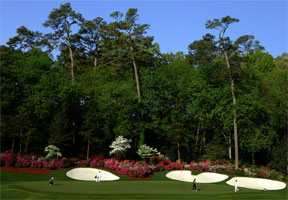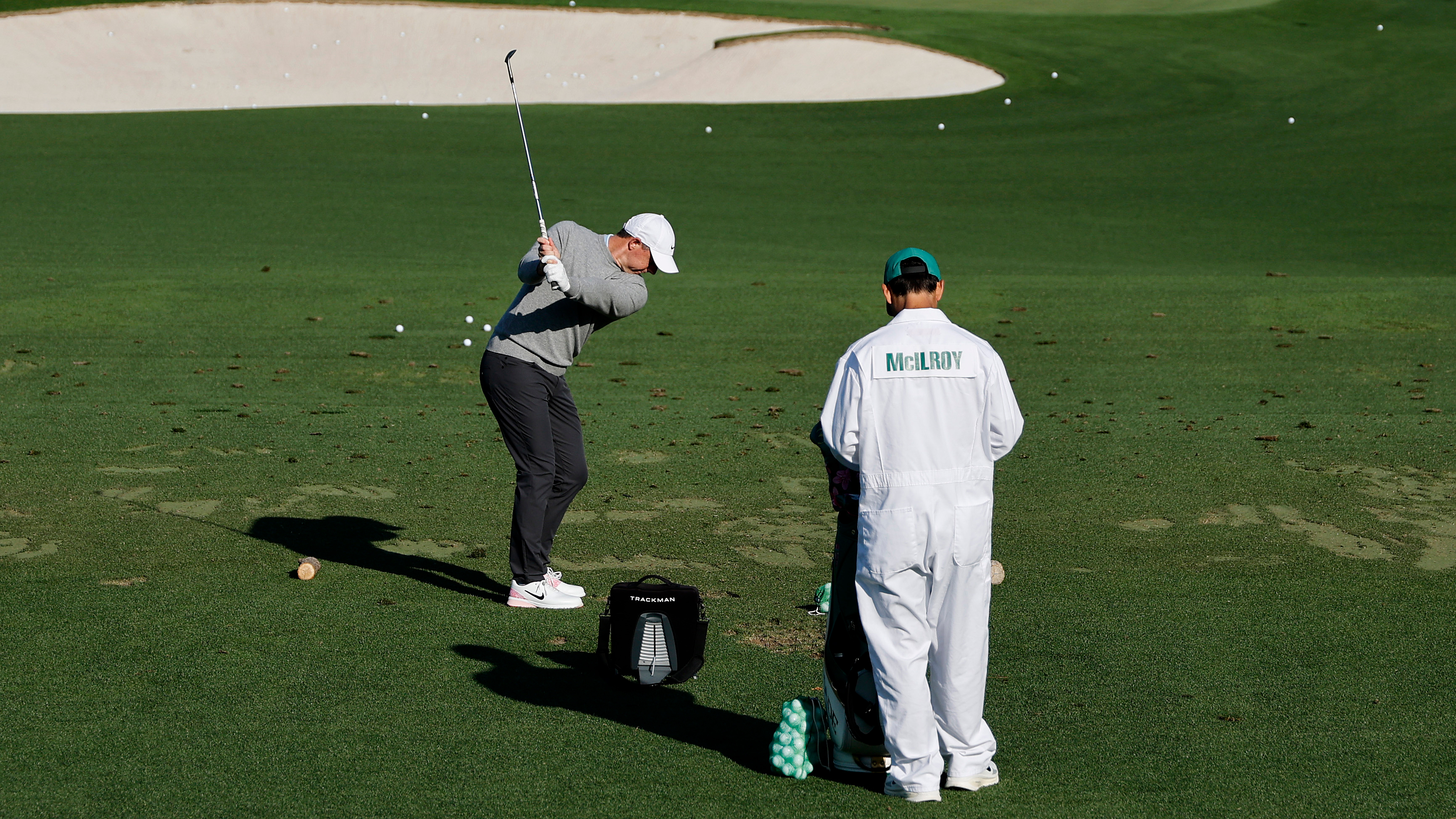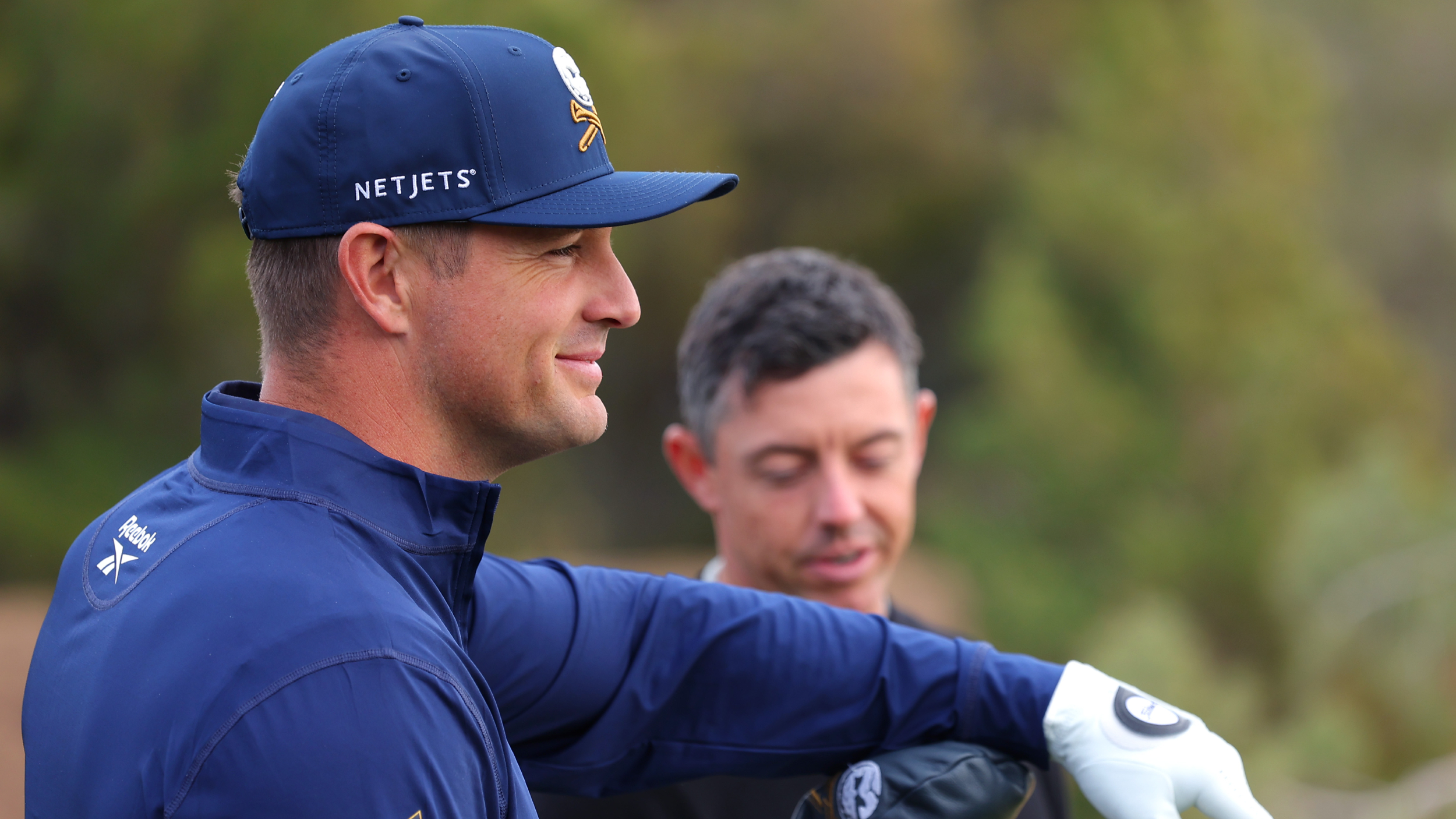Augusta course guide
From the first tee shot to the final putt, get the inside track on the Augusta National layout

Hole 1 ? Tea Olive: par 4, 455 yards
The tee-shot here is the most important shot of the tournament according to Jack Nicklaus. As well as having to battle with the aura of the occasion on the 1st tee, the pros are faced with a ticklish uphill challenge with a marginal dog-leg right.
Drives must avoid the yawning bunker on the right ? re-worked with an extra tongue on its left side ? and a selection of old and new pine trees on the left of the fairway. Position A is therefore just left of centre.
Hole 2 ? Pink Dogwood: par 5, 575 yards
A dog-leg left and a great scoring opportunity. This is the hole where the players will look to gain some momentum and many will feel they have missed an opportunity if they don't walk away with a birdie.
Although it's the longest hole on the course, the downward slope means players can gain excellent run. However, the right-hand fairway bunker poses a problem for those who don?t quite have the miles in the tank.
The second shot is a tester if you are going for the flag as the green is protected by two large, deep greenside bunkers. The lay-up might be favoured depending on the pin position. There were two eagles at this hole last year.
Get the Golf Monthly Newsletter
Subscribe to the Golf Monthly newsletter to stay up to date with all the latest tour news, equipment news, reviews, head-to-heads and buyer’s guides from our team of experienced experts.
Hole 3 ? Flowering Peach: par 4, 350 yards
Changed less than any other hole on the course, many people within the game regard the shortest par 4 at Augusta as not just the perfect par 4, but the perfect golf hole.
Its difficulty is due to a hellish right-to-left sloping green green protected by a bunker on its thin left-hand extremity. Most players will take a 3-wood or iron off the tee to stay short of the four fairway bunkers and leave themselves a full shot into the green. But as history shows, it is definitely better to be long than short, as Jeff Maggert worked himself into trouble here in 2003.
Hole 4 ? Flowering Crab Apple: par 3, 240 yards
The first of three fantastically difficult holes that the public rarely gets to watch on TV. This year the tee has been elevated and moved 35 yards further back.
The green has a deep and treacherous trap front right and a more modest bunker on its left. Club decision is critical because there is a notorious swirling wind and the putting surface is an unforgiving runaway for incoming traffic, sloping towards to the front.
With the extra distance the hole becomes extremely tricky to birdie as height is needed for the ball to have half a chance of stopping.
Hole 5 ? Magnolia: par 4, 455 yards
This is an uphill dogleg left featuring another typically testing putting surface that slants downwards towards the front of the green.
Inspired by the "Road Hole" on the Old Course at St Andrews, the 5th has been spiced up by deep fairway bunkers which demand supreme accuracy from the tee.
Players who are tempted to cut the corner but get a bit too greedy often pay the ultimate penalty. However, the approach can be difficult from the far right-hand side of the fairway so it's a case of finding the perfect line.
Hole 6 ? Juniper: par 3, 180 yards
A classic on the Augusta track, having not changed in 31 years. A solid 5 or 6-iron gives a good opportunity to pick up a birdie depending on the weather conditions ? the elevated tee poses differing challenges depending on the strength of wind on the day.
Despite what appears to be a large target area, it can be difficult to get close to the hole ? pin positions will be crucial. Averaging 3.12 during the 2006 Masters, Chris DiMarco aced it in 2004.
Hole 7 ? Pampas: par 4, 450 yards
This is a daunting hole from start to finish. It begins with a tee shot through an intimidating tunnel of Georgia Pines and finishes with a green ruthlessly guarded by a sea of bunkers back and front.
The 7th has become even more difficult since it was extended by 40 yards, giving the pros no choice but to take driver if they want a chance of a decent approach.
The ideal drive is just left of the centre of the fairway but the real problems begin with the approach shot to the green. Three traps at the front and two at the back mean the mid-iron selection has to be better than perfect.
Hole 8 ? Yellow Jasmine: par 5, 570 yards
A scoring opportunity as the green is reachable in two, although an accurate drive is crucial. There is no room for error as the green can be obscured by trees on the left-hand side of the fairway and the deep fairway bunker on the right swallows up wayward drives.
The green has no bunkers but is protected by severe mounding, meaing a two-shot strategy can sometimes be a mistake. There is a fine line on the 8th between bogey and birdie. Bruce Devlin holed his second shot here in 1967 for an albatross.
Hole 9 ? Carolina Cherry: par 4, 460 yards
The 9th has become one of the most difficult holes on the course since extra yards were added in 2002. The perfect drive is a long, tree-hugging punch down the right-hand side of the fairway in order to take the two large greenside bunkers out of play on the approach.
But even if players produce a grade A tee-shot, one of the most difficult shots in golf awaits. The green is famous for sloping from back to front and anything short can end up 40 yards back on the fairway. This hole can prove a gritty psychological challenge at the turn ? the average score was 4.172 in 2006.
Hole 10 ? Camellia: par 4, 495 yards
If you're mentally scarred from the 9th, be prepared for more punishment at the monstrous 10th. Traditionally the most difficult hole in Masters history, the field has never averaged below par here in any given year.
A big drive down the centre or left is needed from the tee on a hole that can play shorter if you are long enough to catch the downward fairway slope.
The green is a contrary customer, sloping right to left and providing the most testing putting surface in the competition.
Incidentally, the worst aggregate score on the 10th over the course of four days was recorded by Charles Evans Jnr. He finished eight over for the hole after shooting 5,6,7,6.
Hole 11 ? White Dogwood: par 4, 505 yards
The 11th marks the beginning of "Amen Corner", a term coined by Herbert Warren Wind in Sports Illustrated in 1958 to represent a run of three critical holes. In fact this hole played harder than any other on the course in 2006 as player averaged 4.47.
The wind is an important factor on this long par 4 where a 300-yard drive is needed to make the crest of the hill. Major changes have been made this year including the tee being moved back and trees introduced on both sides of the fairway.
The green is an impressive spectacle ? its left-hand side is protected by a pond while an expertly placed bunker on the right makes this a tough hole to birdie. Remember Larry Mize's chip shot here back in 1987?
Hole 12 ? Golden Bell: par 3, 155 yards
One of the most famous short holes in the game, the 12th provides a breathtaking sight on a sunny day with Rae's Creek in front of the putting surface. However, if the wind comes out to play, this hole has the power to punish competitors for the rest of the tournament.
No risks can be taken on the shortest par 3 on the course. As well as the Creek, the green is protected by a bunker in front and two behind. Depending on the breeze, club selection can range from a 6-iron to a wedge. This is a spine-tingling spectacle of a hole that sadly we only get to see once a year.
Hole 13 ? Azalea: par 5, 510 yards
Amen Corner ends with the most beautiful hole at Augusta which boasts approximately 1,600 azaleas. It poses a simple question ? ?to risk or not to risk? The ideal drive is a bullet straight down the middle of the fairway but the fun begins with the approach shot.
Here you are faced with the dilemma of whether or not to go for the green which has a tributary of Rae's Creek boldly guarding the front and four sand traps eagerly waiting behind. Players must anticipate a rewarding bonus to the scorecard ? or a painful moment in front of the cameras. Tommy Nakajima shot a 13 here in 1978.
Hole 14 ? Chinese Fir: par 4, 440 yards
The 14th is the only hole at Augusta without a bunker. Unfortunately for the players this gem has other treats in store. A solid 3-wood will set you up perfectly for a mid iron into the green but beware of the undulating fairway that can drag your tee shot off course.
The putting surface is famous for its severe contours and it can be very difficult to get close to the flag. This played as the 10th hardest hole in 2006 and the last player to eagle it was Tiger Woods.
Hole 15 ? Firethorn: par 5, 530 yards
Gene Sarazen?s albatross here in 1935 was referred to as "the shot heard around the world". Courageous big-hitters will go for the green in two but with the tee having been moved back 30 yards and shifted to the left 20, many in the field will favour a lay-up.
The pine trees have matured on the right of the fairway so being straight is a necessity if you are going to score well. The hole ? that the then-world number one David Duval famously triple-bogeyed at the 63rd Masters ? has an impenetrable green with a pond at the front and rear, as well as a worrying bunker on the right fringe.
The big hitters can pick up birdies or better here but the drive has to be perfect and, most importantly, long.
Hole 16 ? Redbud: par 3, 170 yards
This hole is famous for Tiger Woods? chip in 2005 that paused on the hole edge before sinking. It is played completely over water to a landing strip protected by two bunkers on the right and one on the left.
The green is another Augusta special. It slopes severely from right to left and produces some incredible putting lines on the final day. The wind plays a major factor on a fascinating par 3 that always produces drama. In 2005 Trevor Immelman became the last player to record an ace here.
Hole 17 ? Nandina: par 4, 440 yards
This hole features the famous Eisenhower Tree which stands to the left-centre of the fairway. Now 210 yards from the tee, it was named after the former president and member because he hit it so many times and campaigned to get it removed.
The green here is more straightforward than others at Augusta ? there are only two bunkers to deal with at the front.
This hole played second hardest in 2006 with players averaging 4.28 shots. Amazingly there hasn't been an eagle here for nine years, Davis Love III bagging a 2 here in 1998.
Hole 18 ? Holly: par 4, 465 yards
Probably the finishing hole in many people's dream 18 ? although it poses probably the most difficult tee-shot at the Masters.
A tight target and two fairway bunkers at the elbow give the pros plenty to think about.
For the approach, a mid-iron is needed into a green guarded by two bunkers. If you find the fairway bunkers, think Sandy Lyle and say your prayers.
Not everyone finds this hole difficult though - John Huston recorded 2,3,4,3 here during the 1997 Masters.
HISTORY / TRIVIA / COURSE GUIDE / WINNERS / PROFILES / RECORDS
-
 Rory McIlroy Explains His Extraordinary Pre-Round Routine (And It's The Complete Opposite Of Most Amateurs)
Rory McIlroy Explains His Extraordinary Pre-Round Routine (And It's The Complete Opposite Of Most Amateurs)McIlroy shares what goes into his usual pre-round routine at tournaments and what his timetable looks like before arriving at the first tee
By Jonny Leighfield Published
-
 ‘You Kinda Did It To Yourself’ – When Bryson DeChambeau Needled Rory McIlroy Over US Open Battle
‘You Kinda Did It To Yourself’ – When Bryson DeChambeau Needled Rory McIlroy Over US Open BattleMonths after Bryson DeChambeau’s defeat of Rory McIlroy in the US Open, the two met in Las Vegas, where the LIV Golfer had a lightning-quick response to a humorous comment from his rival
By Mike Hall Published